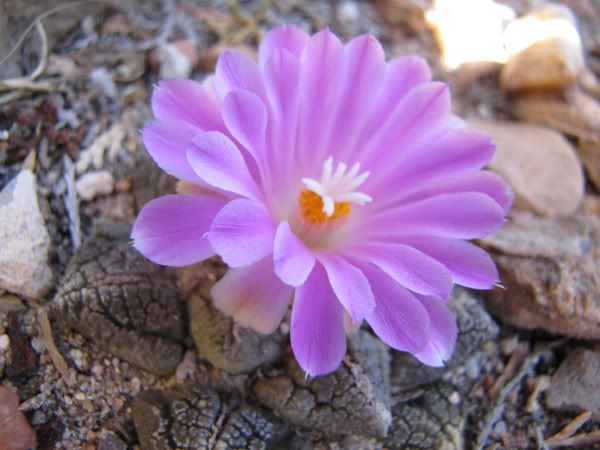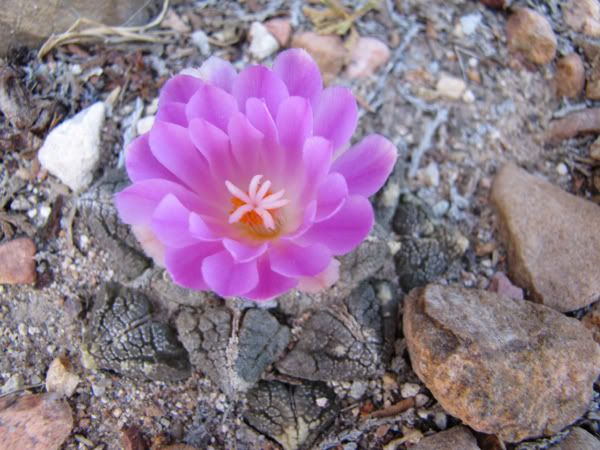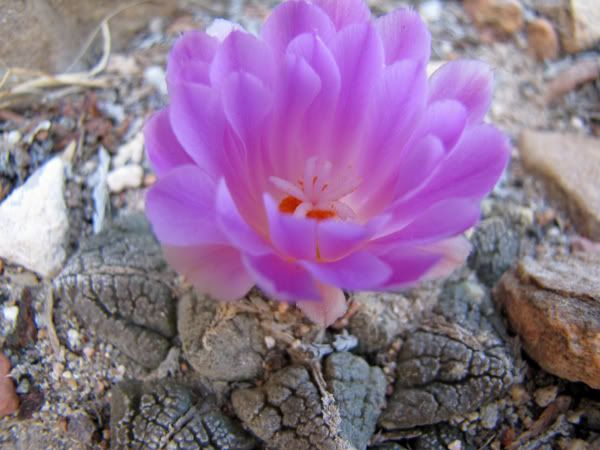My Cacti 2009
- CelticRose
- Posts: 1621
- Joined: Mon Nov 03, 2008 4:17 am
- Location: Mesa, AZ
- Contact:
Nice flowers! 
My mind works in mysterious ways.
I'm all a-Twitter: http://twitter.com/RosCeilteach
My needlework blog: http://rainbowpincushion.blogspot.com
I'm all a-Twitter: http://twitter.com/RosCeilteach
My needlework blog: http://rainbowpincushion.blogspot.com
Thank you, CelticRose, Daiv and Süleyman for your kind comments. 
Overall, this year has been pretty good, although some plants did not flower, which is due mostly to the heavy presence of root knot nematodes. However, some cacti like the Thelocactus setispinus look healthy and flower again and again despite the pest's presence. I am still trying to figure out a remedy to this problem, before I lose more of my cactus plants. Hopefully something that does work can be found soon.
Harald
Overall, this year has been pretty good, although some plants did not flower, which is due mostly to the heavy presence of root knot nematodes. However, some cacti like the Thelocactus setispinus look healthy and flower again and again despite the pest's presence. I am still trying to figure out a remedy to this problem, before I lose more of my cactus plants. Hopefully something that does work can be found soon.
Harald
That's a tough problem to have as it seems there are very few people who can help on this.hegar wrote:I am still trying to figure out a remedy to this problem, before I lose more of my cactus plants. Hopefully something that does work can be found soon.
All Cacti are succulents, but not all succulents are Cacti
Well, after a pause caused by the summer heat and the hail storm on September 16th I am happy to present another cactus in flower. This plant usually flowers at the end of October or beginning of November, but this year it is a little early. The cactus is an Ariocarpus fissuratus. I only do have two flowering size plants and this one was purchased as an eight year old seedling grown plant in April 2006. It did flower that very same year and has done so ever since. It is now 6.5 cm in diameter. By the way, the last two images were taken on day two of flowering. The plant even opened the blossom the following day (Sunday). Fall weather, which is not so extreme with the heat and a decline in pollinating insects help the flowers to last longer.
The other plant should also produce a blossom or two, but thus far I cannot see a flower bud.
Harald





The other plant should also produce a blossom or two, but thus far I cannot see a flower bud.
Harald





-
Christer Johansson
- Posts: 2452
- Joined: Wed Aug 09, 2006 11:57 am
- Location: Västerås, Sweden
- Contact:
- CelticRose
- Posts: 1621
- Joined: Mon Nov 03, 2008 4:17 am
- Location: Mesa, AZ
- Contact:
Nice flower! 
My mind works in mysterious ways.
I'm all a-Twitter: http://twitter.com/RosCeilteach
My needlework blog: http://rainbowpincushion.blogspot.com
I'm all a-Twitter: http://twitter.com/RosCeilteach
My needlework blog: http://rainbowpincushion.blogspot.com
There are few chemical controls for nematodes. Possibly none are registered for home use.
There is a systemic nematicide Aldicarb, available under the name Temik, but I think only registered for professionals.
Abamectin is also an effective nematicide. One brand name is Avid, but I think there are others. It is sold as Avicta as a seed treatment against nematodes. Because it isn't truly systemic, spraying above ground would not be effective but a soil drench should be. I have no clue about dosages.
There is a systemic nematicide Aldicarb, available under the name Temik, but I think only registered for professionals.
Abamectin is also an effective nematicide. One brand name is Avid, but I think there are others. It is sold as Avicta as a seed treatment against nematodes. Because it isn't truly systemic, spraying above ground would not be effective but a soil drench should be. I have no clue about dosages.
--ian
- dustin0352
- Posts: 1303
- Joined: Sat Apr 26, 2008 11:40 am
- Location: East Coast Florida
- kevin63129
- Posts: 768
- Joined: Sat Feb 07, 2009 12:03 pm
- Location: St.Louis,MO. Zone 6 A
- Contact:
Thank you, everyone for your nice and kind comments. The Ariocarpus genus is perhaps my favorite. At least I am convinced, that it would be my wife's favorite, because it does not look like a cactus and most of the time the plants are hardly visible, if planted in the ground.
I do have four A. fissuratus plants and one that is a subspecies lloydii. The last plant obtained I won in the cactus raffle. Nobody wanted it and it was still available at the end of the drawing!
My two small A. kotschoubeyanus plants kind of shrivelled away. I have a gut feeling that they are no longer among the living. Most likely they did not get enough water at regular intervals. It could also be, that they do not tolerate bright sunlight as well as A. fissuratus. I have noticed, that the new plants, which I placed under my Chitalpa tree are looking fine. They are also more exposed, i.e. do not pull back into the earth as much as those planted in the open.
Ian, I am aware of the aldicarb and I am authorized to purchase it, although it is a restricted use pesticide, because I do hold a commercial (regulatory) pesticide applicator license. The other compound is something I have not heard about, but I am going to check it out.
I had read some time ago, that aldicarb (Temik) combined with imidacloprid does quite a good job at controlling both nematodes and insect pests. I had hoped to go with a biological control regimen. There are fungi, nematodes, and bacteria that will also work to a certain extent. However, if I do not find anything that does a decent job of reducing these pests, I shall go ahead with the chemical treatment. It is too late for this year, but come next spring I intend to get serious about this task.
Harald
I do have four A. fissuratus plants and one that is a subspecies lloydii. The last plant obtained I won in the cactus raffle. Nobody wanted it and it was still available at the end of the drawing!
My two small A. kotschoubeyanus plants kind of shrivelled away. I have a gut feeling that they are no longer among the living. Most likely they did not get enough water at regular intervals. It could also be, that they do not tolerate bright sunlight as well as A. fissuratus. I have noticed, that the new plants, which I placed under my Chitalpa tree are looking fine. They are also more exposed, i.e. do not pull back into the earth as much as those planted in the open.
Ian, I am aware of the aldicarb and I am authorized to purchase it, although it is a restricted use pesticide, because I do hold a commercial (regulatory) pesticide applicator license. The other compound is something I have not heard about, but I am going to check it out.
I had read some time ago, that aldicarb (Temik) combined with imidacloprid does quite a good job at controlling both nematodes and insect pests. I had hoped to go with a biological control regimen. There are fungi, nematodes, and bacteria that will also work to a certain extent. However, if I do not find anything that does a decent job of reducing these pests, I shall go ahead with the chemical treatment. It is too late for this year, but come next spring I intend to get serious about this task.
Harald










